#ada blackjack
Text

Amazing photo of Allen Crawford and Vic, the Wrangel Island expedition cat in the 1920s. This expedition was an absolute nightmare. Only Vic and her owner, an extraordinary woman named Ada Blackjack, survived. I strongly encourage you to look up Ada! Source.
1K notes
·
View notes
Text
Hey Tumblr, thought you might enjoy seeing some more pictures of Ada Blackjack!




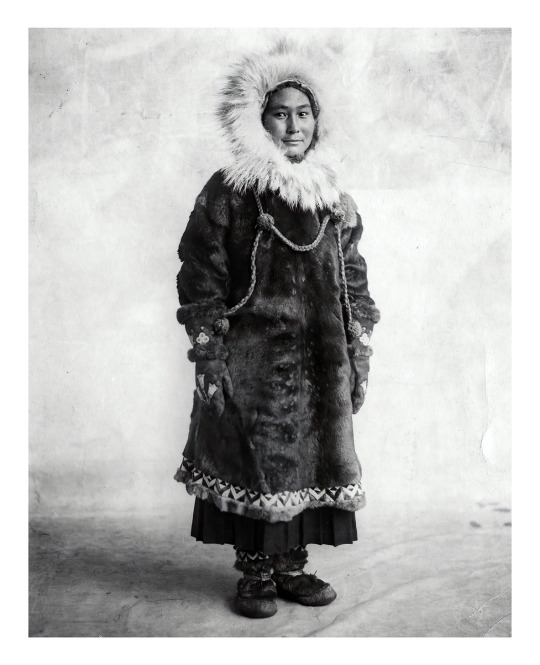


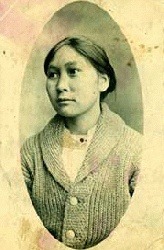

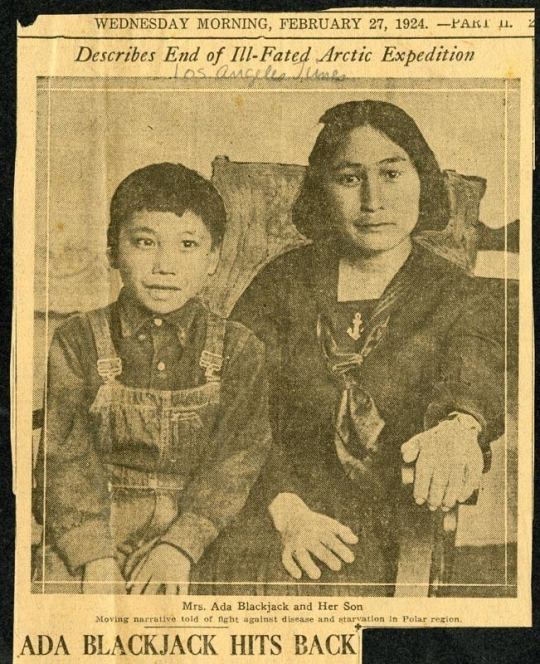
EDITED TO ADD: If you like this post, you might also like my previous post about Ada with reading recommendations!
563 notes
·
View notes
Text
POLAR EXPLORERS SHOWDOWN: FINAL ROUND


72 notes
·
View notes
Text

Day 6: Ada Blackjack!
It was 1920 in Nome, Alaska, and Ada Blackjack desperately needed work. She’d been born Ada Delutuk, sent to a residency school after her father’s death, and only recently had escaped her abusive marriage, obtaining a divorce and then walking forty miles with her son in her arms. Then that son had contracting tuberculosis, and Ada had been forced to sign him over to an orphanage - with the understanding that she could reclaim him once she had money for his care. And then, opportunity knocked.
Eccentric explorer Vilhjalmur Stefansson, he of the “friendly arctic,” had hatched a bold plan. Members of his previous expedition - Stefansson not among them - had survived months marooned on lonely Wrangel Island. Perhaps a more prepared group - Stefansson, again, not among them - could colonize the island for Canada! He wanted at least one Inupiat seamstress among his hand-picked crew of scientists, likely remembering Kiruk’s aid on the previous expedition, and Ada was hired… though it came as a shock to her to find that she was the only Alaska Native on the tiny expedition: five men, herself, and Vic the cat.
By the end of the first year, the situation on barren, freezing Wrangel Island was dire. Game was sparse, and one crew member, Lorne Knight, was already weak with scurvy. The three remaining men set out for help - and were never seen again. Ada nursed Lorne, but there was nothing she could do to prevent his slow, lingering death - and soon she found herself the only living human on the island.
Ada and Vic were rescued after two years on the island, and she was finally able to reunite with her son. She moved to Seattle, where he would receive the best tuberculosis treatment, and made a second marriage that ended in a second divorce. She and her family later returned to Alaska, where she died at 85. Though she avoided the spotlight, her second son, Billy, never lost sight of his mother’s accomplishments. He composed her epitaph: “The Heroine of Wrangel Island.”
#ada blackjack#american history#indigenous history#inupiat history#polar exploration#history#awesome ladies of history#october 2023#my art
16 notes
·
View notes
Text
I love Ada Blackjack so much 😭
0 notes
Text
1 note
·
View note
Photo
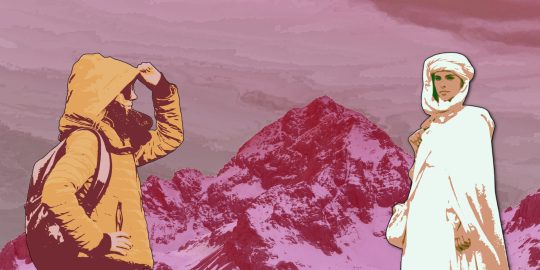
There She Goes: A Reading List on Women Adventurers
The women you'll find on top of the world.
https://longreads.com/2023/04/04/there-she-goes-a-reading-list-on-women-adventurers/
#Reading List#Travel#Unapologetic Women#Ada Blackjack#aeon#Alexandra David-Néel#Claire Turrell#David Guy#Elise Wortley#Emily Wit#Emma Garman#Harper's#History#Isabell Eberhardt#Kieran Mulvaney#longreads#Nan Shepherd#Outside#Rachel Kushner#Rahawa Haile#reading list#Rhian Sasseen#Robert Macfarlane#Simone de Beauvoir#Smithsonian Magazine#The Guardian#The New York Times Style Magazine#The Paris Review#Tricycle#women
1 note
·
View note
Text
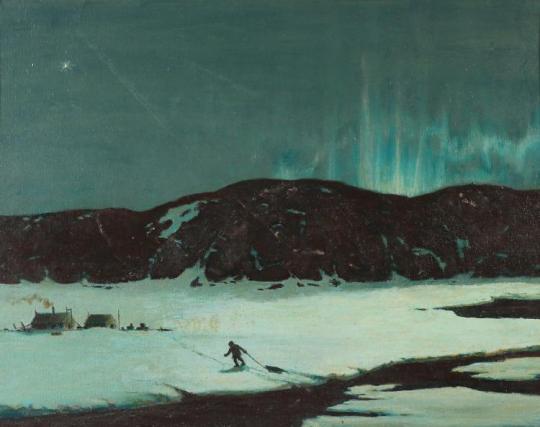
John Williams Allison - Ada Blackjack's long, lone vigil in the Arctic - Wrangle Island Story
322 notes
·
View notes
Text
So given the writer’s strike, some people are concerned about their shows and movies being postponed or canceled, and aside from the fact networks have already BEEN canceling shows for no reason for years (I still maintain a healthy anger about what Netflix did to Sense8), I thought I would suggest some books on disasters you might want to read if you’re into that sort of history. Which you are if you’re here, I imagine.
Note: I’m suggesting these books because most books on disasters don’t get a huge audience, and so I recommend them because this sort of writing can be hard on the writer and requires a bunch of research. We throw so much money at true crime, we can spare a few bucks for the stories of people who died in disasters.
Also, please check with these with your local small bookstore or library. Amazon can be great, but let’s lend a hand to those who need us more.
Recommended books:
“The Circus Fire,” by Stewart O’Nan - This is one my favorite books on a disaster, because the whole thing creates a very vivid image of the circus prior to the fire in Hartford in July of 1944. There’s one specific line in the book which always makes me pause because it’s so affecting, about how everyone who escaped being able to hear the sounds of the animals screaming as they died - except all of the animals were out of the tent by then.
“The Only Plane in the Sky,” by Garrett Graff - This, I highly recommend you get on audiobook. It’s an oral history of the events of 9/11 with a full cast, and it’s incredibly affecting to listen to.
“Ada Blackjack: A True Story of Survival in the Arctic,” by Jennifer Niven - Ada Blackjack was a badass: flawed and weak at times, but hardy and steady when necessary. Half of her story is how she survived, but half is how she was exploited following her rescue. Both stories need to be known.
“Alive,” by Piers Paul Read - If you’re watching “Yellowjackets,” this should be required reading. If you’ve seen the movie adaptation from the 90s, there is WAY more you don’t know. The story of Uruguayan Air Force Flight 571 is a tough read, but a worthy one.
“A Night to Remember,” by Walter Lord - This is to disaster nonfiction what “In Cold Blood” is to true crime. It’s not a long read, but it’s a great one. Lord had the advantage of writing the book while many of the Titanic survivors were still alive and could give a very good description of what they went through.
“Dying to Cross,” by Jorge Ramos - I recommend this not just because it is good, but because it is timely. Nineteen people died in an un-air-conditioned truck as they were attempting to make their way into the states from over the Mexican border. It’s a horrific story, and one that humanizes an issue for whom some people need to be faced with the humans involved and what they go through.
“Bath Massacre: America’s First School Bombing,” by Arnie Bernstein - Harold Schecter also wrote a very good book on the Bath school massacre called “Maniac,” but I have a preference for this version. It’s a good reminder that schools in the U.S. didn’t just become targets in the last twenty years or so.
“Into Thin Air,” by Jon Krakauer - I feel like this is a gimme, but it’s a fantastic book from someone who was actually on Mount Everest during the 1996 disaster and knew those involved very well. I happen to like Krakauer’s work anyway - I even like “Into the Wild” despite my feelings about McCandless and his legacy - but it’s understandably my favorite.
“And the Band Played On,” by Randy Shilts - The one thing I will say is that Shilts’ treatment of Gaetan Dugas is *rough* to say the least and outright wrong on some points, God knows. But it’s still an amazing book, and if you come out of it not wanting to dig up Reagan and punch him a bunch I’m impressed at your restraint.
“Triangle: The Fire That Changed America,” by David von Drehle - The Triangle Shirtwaist Factory Fire is one of the disasters I am most interested in, and I would argue this is the definitive book on the subject. Also, if this book introduces you to both Clara Lemlich and Frances Perkins … I mean, talk about badass women.
“The Radium Girls,” by Kate Moore - Look, I’ll say this. If you know of the Radium Girls, this is a great book on their story. If you don’t know, go in blind and prepared to be horrified.
“Red Famine: Stalin’s War on Ukraine,” by Anne Applebaum - Ukraine has always been a target. During the Holodomor, they were victims of one of the worst genocides in history.
“Midnight in Chernobyl,” by Adam Higginbotham - Like the miniseries? This is a great source for more information for what happened at Chernobyl and all of the ass-covering involved.
"Boston Strong: A City's Triumph Over Tragedy," by Casey Sherman and Dave Wedge - If you’re interested in the Boston marathon bombing, I really thought this book did a good job of connecting the stories of the victims, the authorities searching for the killers, and the killers themselves.
“Show Me the Bodies: How We Let Grenfell Tower,” by Peter Apps - As I understand it, Apps did a lot of covering the Grenfell Tower fire for the British press, and it shows. He provides a mountain of information, and you will come out of reading this book absolutely LIVID about what authorities allowed to happen in Grenfell and so many other council estates in the UK.
“Dark Tide: The Great Molasses Flood of 1919,” by Stephen Puleo - I feel as though the molasses flood gets treated like a joke a lot of the time, but y’all, twenty people died. That area of Boston was *wrecked*. The photos of the devastation are terrifying. Puleo treats all of this with the proper respect it deserves.
“In the Heart of the Sea: The Tragedy of the Whaleship Essex,” by Nathaniel Philbrick - Forget the movie. Read the book.
“The Great Influenza,” by John M. Barry - Want to read about the 1918 flu epidemic? Want to be mad that a hundred years later we didn’t learn a damn thing?
Now, that’s just a start. If anyone wants, I can always post photos of my disaster book collection on Kindle and next to my recording desk. Or if there’s a specific disaster you’re interested in, I may know of a good book about it you can read.
But just remember if SAG and the directors’ guild joins the strike too - there is so much out there to occupy your time until they come back. Entertainment work is work, and it deserves to be supported financially and fairly as such. Rock on, WGA. ✊
433 notes
·
View notes
Text
Inupiaq Books
This post was inspired by learning about and daydreaming about visiting Birchbark Books, a Native-owned bookstore in Minneapolis, so there will be some links to buy the books they have on this list.
Starting Things Off with Two Inupiaq Poets
Joan Naviyuk Kane, whose available collections include:
Hyperboreal
Black Milk Carbon
The Cormorant Hunter's Wife
She also wrote Dark Traffic, but this site doesn't seem to carry any copies
Dg Nanouk Okpik, whose available collections include
Blood Snow
Corpse Whale
Fictionalized Accounts of Historical Events
A Line of Driftwood: the Ada Blackjack Story by Diane Glancy, also available at Birchwood Books, is a fictionalized account of Ada Blackjack's experience surviving the explorers she was working with on Wrangel Island, based on historical records and Blackjack's own diary.
Goodbye, My Island by Rie Muñoz is a historical fiction aimed at younger readers with little knowledge of the Inupiat about a little girl living on King Island. Reads a lot like an American Girl book in case anyone wants to relive that nostalgia
Blessing's Bead by Debby Dahl Edwardson is a Young Adult historical fiction novel about hardships faced by two generations of girls in the same family, 70 years apart. One reviewer pointed out that the second part of the book, set in the 1980s, is written in Village English, so that might be a new experience for some of you
Photography
Menadelook: and Inupiaq Teacher's Photographs of Alaska Village Life, 1907-1932 edited by Eileen Norbert is, exactly as the title suggests, a collection of documentary photographs depicting village life in early 20th century Alaska.
Nuvuk, the Northernmost: Altered Land, Altered Lives in Barrow, Alaska by David James Inulak Lume is another collection of documentary photographs published in 2013, with a focus on the wildlife and negative effects of climate change
Guidebooks (i only found one specifically Inupiaq)
Plants That We Eat/Nauriat Niģiñaqtuat: from the Traditional Wisdom of Iñupiat Elders of Northwest Alaska by Anore Jones is a guide to Alaskan vegetation that in Inupiat have subsisted on for generations upon generations with info on how to identify them and how they were traditionally used.
Anthropology
Kuuvangmiut Subsistence: Traditional Eskimo Life in the Latter Twentieth Century by Douglas B. Anderson et al details traditional lifestyles and subsistance customs of the Kobuk River Inupiat
Life at the Swift Water Place: Northwest Alaska at the Threshold of European Contact by Douglas D. Anderson and Wanni W. Anderson: a multidisciplinary study of a specific Kobuk River group, the Amilgaqtau Yaagmiut, at the very beginning of European and Asian trade.
Upside Down: Seasons Among the Nunamiut by Margaret B. Blackman is a collection of essays reflecting on almost 20 years of anthropological fieldwork focused on the Nunamiut of Anuktuvuk Pass: the traditional culture and the adaption to new technology.
Nonfiction
Firecracker Boys: H-Bombs, Inupiat Eskimos, and the Roots of the Environmental Movement by Dan O'Neill is about Project Chariot. In an attempt to find peaceful uses of wartime technology, Edward Teller planned to drop six nukes on the Inupiaq village of Point Hope, officially to build a harbor but it can't be ignored that the US government wanted to know the effects radiation had on humans and animals. The scope is wider than the Inupiat people involved and their resistance to the project, but as it is no small part of this lesser discussed moment of history, it only feels right to include this
Fifty Miles From Tomorrow: a Memoir of Alaska and the Real People by William L. Iģģiaģruk Hensley is an autobiography following the author's tradition upbringing, pursuit of an education, and his part in the Alaska Native Settlement Claims Act, where he and other Alaska Native activists had to teach themselves United States Law to best lobby the government for land and financial compensation as reparations for colonization.
Sadie Bower Neakok: An Iñupiaq Woman by Margaret B. Blackman is a biography of the titular Sadie Bower Neakok, a beloved public figure of Utqiagvik, former Barrow. Neakok grew up one of ten children of an Inupiaq woman named Asianggataq, and the first white settler to live in Utqiagvik/Barrow, Charles Bower. She used the out-of-state college education she received to aid her community as a teacher, a wellfare worker, and advocate who won the right for Native languages to be used in court when defendants couldn't speak English, and more.
Folktales and Oral Histories
Folktales of the Riverine and Costal Iñupiat/Unipchallu Uqaqtuallu Kuungmiuñļu Taģiuģmiuñļu edited by Wanni W. Anderson and Ruth Tatqaviñ Sampson, transcribed by Angeline Ipiiļik Newlin and translated by Michael Qakiq Atorak is a collection of eleven Inupiaq folktales in English and the original Inupiaq.
The Dall Sheep Dinner Guest: Iñupiaq Narratives of Northwest Alaska by Wanni W. Anderson is a collection of Kobuk River Inupiaq folktales and oral histories collected from Inupiat storytellers and accompanied by Anderson's own essays explaining cultural context. Unlike the other two collections of traditional stories mentioned on this list, this one is only written in English.
Ugiuvangmiut Quliapyuit/King Island Tales: Eskimo Historu and Legends from Bering Strait compiled and edited by Lawrence D. Kaplan, collected by Gertrude Analoak, Margaret Seeganna, and Mary Alexander, and translated and transcribed by Gertrude Analoak and Margaret Seeganna is another collection of folktales and oral history. Focusing on the Ugiuvangmiut, this one also contains introductions to provide cultural context and stories written in both english and the original Inupiaq.
The Winter Walk by Loretta Outwater Cox is an oral history about a pregnant widow journeying home with her two children having to survive the harsh winter the entire way. This is often recommended with a similar book detailing Athabascan survival called Two Old Women.
Dictionaries and Language Books
Iñupiat Eskimo Dictionary by Donald H. Webster and Wilfred Zibell, with illustrations by Thelma A. Webster, is an older Inupiaq to English dictionary. It predates the standardization of Inupiaq spelling, uses some outdated and even offensive language that was considered correct at the time of its publication, and the free pdf provided by UAF seems to be missing some pages. In spite of this it is still a useful resource. The words are organized by subject matter rather than alphabetically, each entry indicating if it's specific to any one dialect, and the illustrations are quite charming.
Let's Learn Eskimo by Donald H. Webster with illustrations by Thelma A. Webster makes a great companion to the Iñupiat Eskimo Dictionary, going over grammar and sentence structure rather than translations. The tables of pronouns are especially helpful in my opinion.
Ilisaqativut.org also has some helpful tools and materials and recommendations for learning the Inupiat language with links to buy physical books, download free pdfs, and look through searchable online versions
132 notes
·
View notes
Text
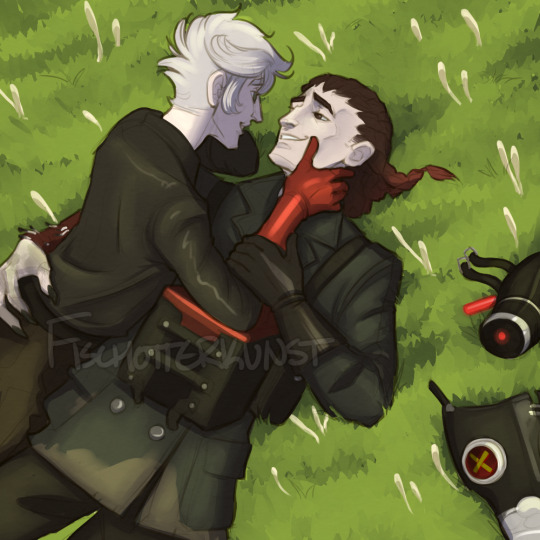
Somewhere that’s green…
i hate literally everything about CoA VII so i'm making my own CoA with blackjack and hookers where everyone lives (summary below cut)
so the POV is from Ada, who in this AU is looking for a cure for the fungal infection that's killing...i mean everyone but in particular her bae Emil
so she and Emil go to see Luchino b/c he's a toxicologist who's working on the cure in the laboratory housing Patient Zero so Luchino is The Guy who will figure it out if anyone can
and they and their team of a couple others are going to go to the source to find an antidote (which is what happens in the canon short)
so Frederick walks in like "can we get going already" and Ada is like.....fielding him b/c Luchino isn't ready to go yet bc he knows he might not make it back and he wants to make sure Patient Zero is provided for
Patient Zero being Rosario, who is in a state of suspension to prevent the infection from killing them before a cure can be found
So the events of the canon short happen where everyone goes to the source and Gets Got but instead of everyone dying Luchino sees Rosario in his hallucination and they're Not Quite Themself so he realizes what's happening and is able to snap out of it and save everyone, and they book it tf outta there with no cure
BUT WAIT
on the way back to the lab they come across Deux ex Machina Andrew aka Withered Leaf, who in another canon AU i hated was ALSO a survivor of the apocalypse who was working to recover some plant seeds (he died in this AU because every AU is Kill River's Faves Horribly). so they bring him with them and he's given his Faith In Humanity back bc of their kindness, and he gives the seeds to Luchino, who realizes that one of the plants has antifungal properties (most antifungal drugs are plant-based).
so they grow the seeds Andrew gave them and are able to successfully produce a cure for both Emil and Rosario.
THE END UwU
#my art#otp: amor fati#luchino diruse#idv professor#rosario killick#the naturalist#idv#identity v#oc/canon#CoA VII AU
18 notes
·
View notes
Text
So You Want To Learn About Ada Blackjack
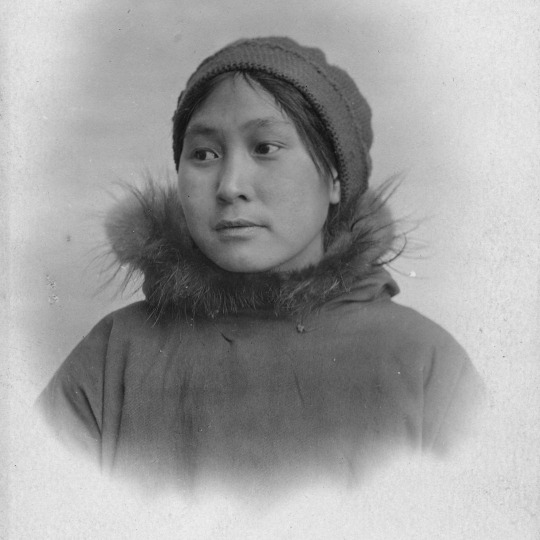
Interested in learning more about polar survivor and finalist in the Polar Explorer Showdown Ada Blackjack? You've come to the right place! I am not a professional academic, but I am a librarian and research professional who has been hyperfixating on the Wrangel Island expedition (and its spiritual predecessor, the Canadian Arctic Expedition or CAE) for a hot minute. My current research is more focused on the boys, but Ada is amazing and more people should know about her!
Here's some background info that will be helpful:
The Wrangel Island expedition was organized by Icelandic-Canadian explorer Vilhjalmur Stefansson. Stefansson was a skilled survivalist and solo explorer, but also a terrible organizer, an attention seeker, and Not A Particularly Good Guy. In 1913, the Karluk, one of the ships associated with the CAE, was frozen in. Stefansson, a seasoned polar explorer, could have stayed and helped his inexperienced crew cope with the challenges of their situation. Instead, he abandoned them to go on a "hunting trip" with a small group that included his personal secretary and the expedition photographer. The Karluk crew made it to a desolate island between Alaska and Siberia named Wrangel Island, where the survivors lived for many months until their eventual rescue. You can read more about this story in The Ice Master by Jennifer Niven and Empire of Ice and Stone by Buddy Levy!
After abandoning the crew of the Karluk, Stefansson stayed in the Arctic until 1918. As soon as he returned to Canada, he immediately started plotting and scheming to get back in the spotlight. Somewhere along the way, he had the brilliant idea that Canada should claim Wrangel Island, the place where the Karluk survivors were marooned (and a known Russian territory). The Canadian government was not at all interested, and neither was the British government, but he didn't let that stop him!
He gathered a crew of 3 eager young Americans- Fred Maurer (28, a survivor of the Karluk disaster), E. Lorne Knight (28, a veteran of the CAE), and Milton Galle (19, had briefly served as Stefansson's secretary while he was on the lecture circuit, no polar experience), and told them that he wanted to claim Wrangel Island for Canada and set up a colony there. However, since all three were Americans, Stefansson needed to find a Canadian citizen willing to lead the expedition. Enter Allan Crawford (20, university student, no polar experience). These four men would claim Wrangel Island for Canada, a thing the Canadian government did not ask them to do, and set up a colony there, planning to stay for at least a year.
Stefansson promised the men that he would hire Indigenous hunters, cooks, and seamstresses to travel with them. However, only Ada Blackjack agreed to go. Ada was a petite 23 year old Iñupiat woman, a survivor of an abusive marriage, and a single mother with a sick son. She was uncomfortable being the only woman and the only Indigenous person in the group, but she needed the money to pay her son's medical expenses. She joined these 4 men (and a cat named Vic) and traveled to Wrangel Island in 1921.
And… you'll have to pick up a book to find out what happens next!
I highly, HIGHLY recommend the book Ada Blackjack by Jennifer Niven. It's meticulously researched and absolutely stunning! Please read it, fall in love with (some of) these people, and join me in Wrangel Island hell.
If you don't have time to read a book but still want the whole story, this Atlas Obscura article is excellent.
Want to read Ada's diary? It's digitized and available through Dartmouth Special Collections, along with a bunch of incredible photos!
Stefansson also wrote a book called The Adventure of Wrangel Island, and every time I think about it, it makes me want to throw up. He's an unreliable narrator, but there are some good pictures.
I hope you've enjoyed learning about Ada! PLEASE read the Niven book, I promise you won't regret it. If you have any questions I will do my best to answer them!
#polar exploration#ada blackjack#wrangel island#for you Marv... the devil works hard but I work harder!
124 notes
·
View notes
Text
POLAR EXPLORERS SHOWDOWN: SEMIFINALS

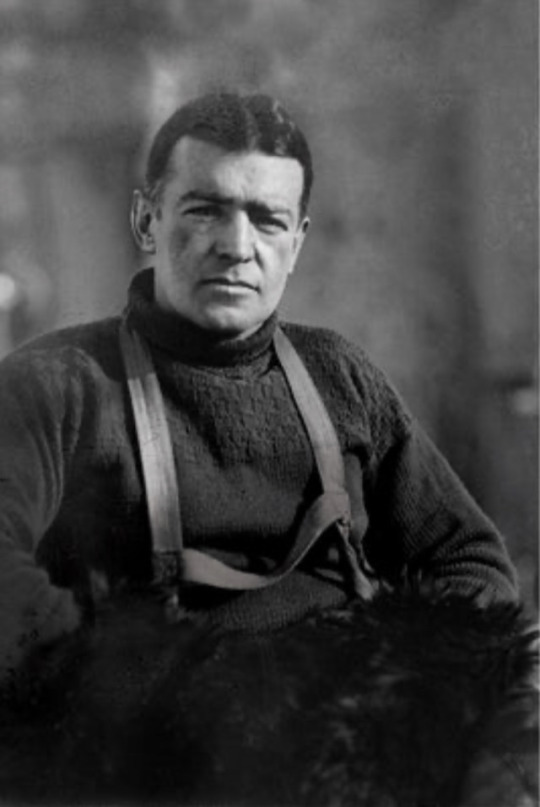
54 notes
·
View notes
Text
Bibliographie
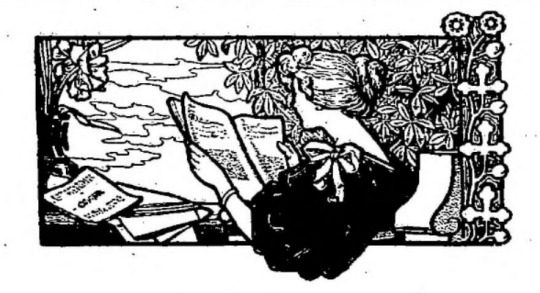
BIOGRAPHIES
X
HISTOIRE / ENCYCLOPEDIES
- L'Erebus - Vie, mort et résurrection d'un navire - Michael Palin
374 pages, éditions Paulsen
Traduit par Thierry Beauchamp
- Périr Dans Les Glaces: Le Mystère de L'Expédition Franklin - Karen Ryan (2018)
127 pages, publié par le Musée canadien de l'histoire
- Les Inuit - Michèle Therrien (2012)
265 pages, éditions Les belles lettres
- Dictionnaire de la mer - Jean Merrien (2014)
904 pages, éditions Omnibus
ROMANS
- Terreur - Dan Simmons
1056 pages, éditions Pocket
traduit par Jean-Daniel Brèque
- Ada Blackjack, survivante de l'Arctique - Jennifer Niven
409 pages, éditions Paulsen
traduit par Jean-François Chaix
- Du bon usage des étoiles - Dominique Fortier (2008)
345 pages, éditions Alto
- Au coeur de l'Antarctique – Ernest Shackleton
208 pages, éditions Libretto
Traduit de l'Anglais (Irlande) par Charles Rabot
- Les naufragés du pôle - A.W. Greely
192 pages, éditions Libretto
Traduit par Frédéric Bernard
- Profondeurs glacées – W. Wilkie Collins
160 pages, éditions Libretto
Traduit de l'Anglais (Royaume-Uni) par Camille Cendrey
#the terror#erebus#amc the terror#histoire#littérature francophone#histoire maritime#arctique#bibliographie
8 notes
·
View notes
Text
Guess what I have sitting around <3
So! I may or may not have learned how to play backgammon because of this stupid comic but while we're on the topic of board games I'm gonna list some of the games I think the others would like. (As someone horrendous at board/card games)
Berenice - War. I don't actually know how to play this card game but based off the chaotic game I saw happen in science class once I feel like she'd be the kinda person to be screaming over games
Will - Checkers, he's a simple man I think he'd like it
Morella - yk connect 4? I know it's not from their time period most likely but I am not taking that into account
Eulalie - go fish
Duke - realistically? He probably likes something way smarter than I am- oh look there's a board game called duke perfect- other than that maybe poker
Montresor - uno.
Ada - tempted to say candyland-
Okay breaking the format a little but why can I see Annabel and Lenore playing battleship together too
Prospero - same thing with duke man's is probably more sophisticated than me maybe like chess or something with dominos
Pluto - blackjack, I feel like he'd be the kinda guy to start playing random games ironically out of boredom then suddenly it's not ironic anymore
22 notes
·
View notes
Note
Resident Terror fan here, hi!!
-The Terror is a 2018 show that ran on AMC that follows the true story of the Franklin Expedition, an Arctic expedition made by ship in the 1840s to find the Northwest Passage that ultimately had no survivors. The show is pretty historically accurate but it has a mythological/supernatural twist (which I know sounds kind of silly at first but imo it’s actually worked into the story really well).
-There are gay characters (one canon gay couple that includes a main character, one couple heavily implied), and imo overall the show has a lot of queer moments in general (I mean the cast is about 99% male and they’re all stuck in the Arctic so you can imagine.)
-There is a main character who is Indigenous (Inuit - Netsilik) and very important to the plot!! The show also shows at least a little bit of life among the Netsilik and features a fair amount of Inuktitut (the language the Netsilik people in this region speak). (Also side note: someone in the replies to your original post said she was “probably Ada Blackjack” (a real Inuit woman who was the sole survivor of a different doomed expedition). She isn’t, she’s a fictional character made up for the show. Blackjack was a different branch of Inuit, spoke a different language, and wasn’t born until half a century after the Franklin Expedition was lost.)
-If the show sounds interesting to you I highly recommend you watch it!! It’s really well done, great acting, costumes, dialogue, etc. and lots and lots and lots of shots of ice. I will say it does get really violent and gory at times so if that’s something you’re wary of I’d definitely suggest looking up content guides online for the show so you know what to look out for. And yes lol, the Terror fandom is alive and well (and very very passionate about the show as you can see here hah), and we’d love to have you join us!!! :-)
dude this show sounds kickass! I’ll try and watch it sometime! Thanks for your answer :)
3 notes
·
View notes